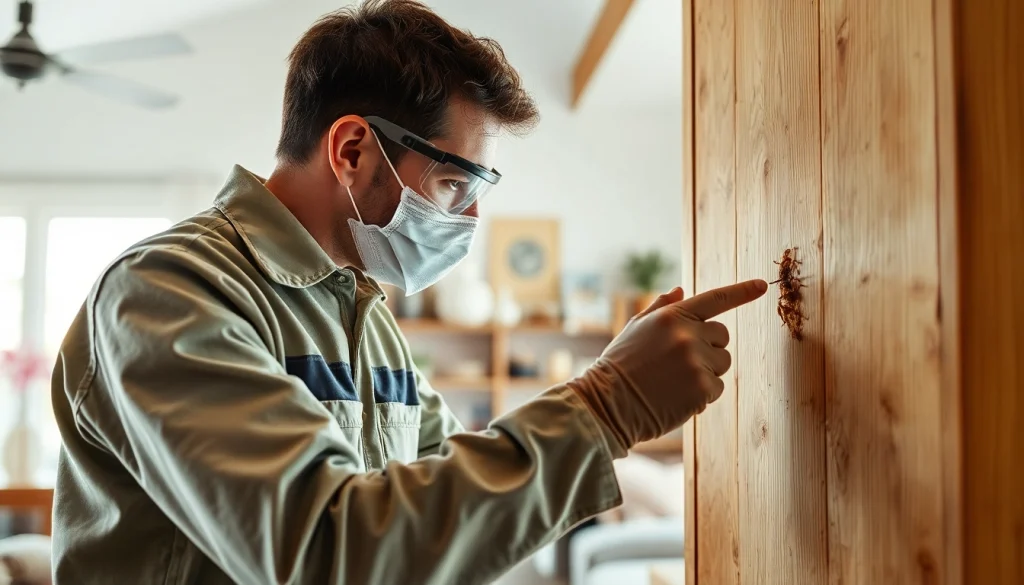Effective Termite Treatments: Comprehensive Solutions to Safeguard Your Home

Understanding Termite Treatments
Termites are often considered one of the most destructive pests in the world due to their ability to cause significant damage to wooden structures and furniture. As homeowners become increasingly aware of the risks associated with these pests, termite treatments have become essential to maintaining property integrity and safety. This article aims to provide a comprehensive understanding of termite treatments, the different methods available, factors influencing treatment choices, and ongoing maintenance for long-term prevention.
What Are Termite Treatments?
Termite treatments refer to a range of strategies and methods employed to manage and eliminate termite infestations. These treatments can be preventative, aimed at stopping termites from entering a property, or curative, designed to eradicate existing infestations. The importance of termite treatments cannot be overstated, as untreated infestations can lead to severe structural damage, requiring costly repairs and remediation. Homeowners must recognize the signs of infestations, understand treatment options, and be proactive in protecting their properties.
Types of Termites and Their Damage
There are three main types of termites that pose threats to structures:
- Subterranean Termites: These termites live in colonies underground and are known for their aggressive behavior and ability to cause extensive damage within a short period. They create mud tubes to travel from their nests to food sources, which can include the wooden structures of homes.
- Drywood Termites: Unlike subterranean termites, drywood termites do not require contact with the soil. They infest dry wood, including furniture, beams, and even hardwood floors, causing damage without any visible signs on the exterior of the building.
- Dampwood Termites: These termites prefer wood that is decayed or damp, making them more common in regions with high humidity. They can affect both structural wood in homes and standing trees.
The damage caused by these termites can vary significantly, but all can lead to costly repairs. Homeowners should be particularly vigilant about signs of termite activity, which may include mud tubes, discarded wings, and hollow-sounding wood.
Signs of Termite Infestation
Identifying a termite infestation early is crucial for effective treatment. Here are some common signs to watch out for:
- Mud tubes: These are tunnels made of soil and saliva that termites use to move between their nest and food sources.
- Wood damage: Termite damage often manifests as hollowed-out wood or compromised structures. Tapping on wooden surfaces can help determine if they sound hollow.
- Discarded wings: Swarming termites shed their wings. Finding these in and around your home can indicate that termites are nearby.
- Frass: This is a term for termite droppings, which resemble small wood pellets. It is often found near infestations.
Methods of Termite Treatments
Chemical Treatments: Pros and Cons
Chemical treatments are commonly used for both preventive measures and active infestations. Two primary types include:
- Liquid Termiticides: These pesticides create a chemical barrier around the foundation of a home to keep termites out. They must be applied by professionals to ensure proper coverage.
- Termite Baits: These involve placing bait stations around a property that attract termites. The termites consume the bait and take it back to their colony, ultimately leading to its destruction.
While chemical treatments are effective, they also pose certain risks. There are concerns about the potential environmental impact of these chemicals and possible health risks for humans and pets. Proper application and adherence to safety protocols are essential when considering chemical treatments.
Physical Barriers and Preventative Measures
Physical barriers are essential in termite control, especially during construction. Options include:
- Concrete or Steel Barriers: Installing these at strategic locations can prevent termites from gaining access to wooden structures.
- Termite Shields: These metal shields can also be integrated during construction to protect areas vulnerable to termite entry.
- Soil treatments: Applying certain chemicals to the soil during construction can deter termites from burrowing into the structure.
Regular maintenance, such as ensuring proper drainage and keeping wood away from the soil, can also enhance protective measures against infestations. Homeowners should routinely check for potential access points and reinforce barriers as needed.
Natural and DIY Termite Solutions
Some homeowners may prefer natural or DIY solutions to manage termite problems. While not always as effective as professional treatments, these methods can provide supplementary control:
- Essential Oils: Natural oils, such as orange oil and neem oil, may repel termites but have limited effectiveness in treating active infestations.
- Boric Acid: This natural pesticide can be applied to affected areas. When ingested, it dehydrates and ultimately kills termites.
- Traps: DIY traps can be made using materials like cardboard soaked in a sugar solution. Once termites are attracted, you can dispose of the trap to help reduce their population.
While these methods can help manage minor infestations, it is advisable to consult with professionals for significant problems to ensure comprehensive treatment.
Choosing the Right Termite Treatment
When to Seek Professional Help
Deciding when to call in the experts is crucial. Homeowners should consider professional assistance in the following circumstances:
- If there are signs of a significant infestation or structural damage.
- When DIY attempts have failed to control the problem.
- If there is uncertainty about the type of termites present or how to approach treatment.
Experts possess tools and knowledge that are essential for effectively treating infestations and ensuring that the problem does not recur.
Factors Influencing Treatment Costs
The cost of termite treatments can vary depending on several factors:
- Type of Treatment: Chemical treatments often incur different costs based on the method used, such as barriers or baits.
- Extent of Infestation: More extensive damage will require more intensive treatments, driving up costs.
- Property Size: Larger homes will generally incur higher treatment costs due to additional labor and materials required.
Homeowners should obtain multiple quotes and consult professionals to assess the best treatment options in terms of cost and efficacy.
Long-term Maintenance and Prevention
Post-treatment, maintaining a termite-free environment is essential. This involves:
- Regular inspections for signs of termites and structural damage.
- Proper landscaping practices, such as keeping mulch away from the foundation and maintaining drainage.
- Addressing moisture problems, as termites are attracted to damp environments.
Implementing these preventative measures can help minimize the risk of future infestations and preserve the integrity of your home.
Measuring Effectiveness of Termite Treatments
Evaluating Treatment Success
To determine the effectiveness of a termite treatment, homeowners should monitor for the absence of signs of termite activity over time. This may involve regular checks for mud tubes, wood damage, and swarming activity. A reduction in these signs indicates successful treatment, whereas ongoing activity suggests that further evaluation may be necessary.
Follow-Up Inspections
After treatment, follow-up inspections are crucial for ensuring that the problem has been adequately addressed. These inspections should be conducted annually, or sooner if there are any signs of renewed activity, allowing for early intervention if necessary.
Monitoring for Future Infestations
Homeowners can take proactive steps to monitor and prevent future infestations. This includes:
- Setting up monitoring stations around the property.
- Utilizing bait systems that indicate termite activity without allowing them to cause damage.
- Engaging pest professionals to perform regular monitoring services as part of a preventative maintenance plan.
By staying vigilant, homeowners can minimize their risks and ensure their properties remain termite-free.
Frequently Asked Questions About Termite Treatments
How Do I Know If I Need Treatment?
Signs such as mud tubes, wood damage, and swarming activity are clear indicators that professional treatment may be necessary. If you suspect termite activity, it is wise to consult a pest control professional for an inspection.
What Are the Costs Associated with Treatments?
The costs of termite treatments can vary widely based on factors such as the type of treatment, extent of the infestation, and size of the home. Homeowners may see prices ranging from a few hundred to several thousand dollars depending on the situation.
Can I Handle Treatment Myself?
While some minor infestations may be manageable with DIY methods, significant infestations often require the expertise of professionals to ensure complete eradication and to prevent further damage.





